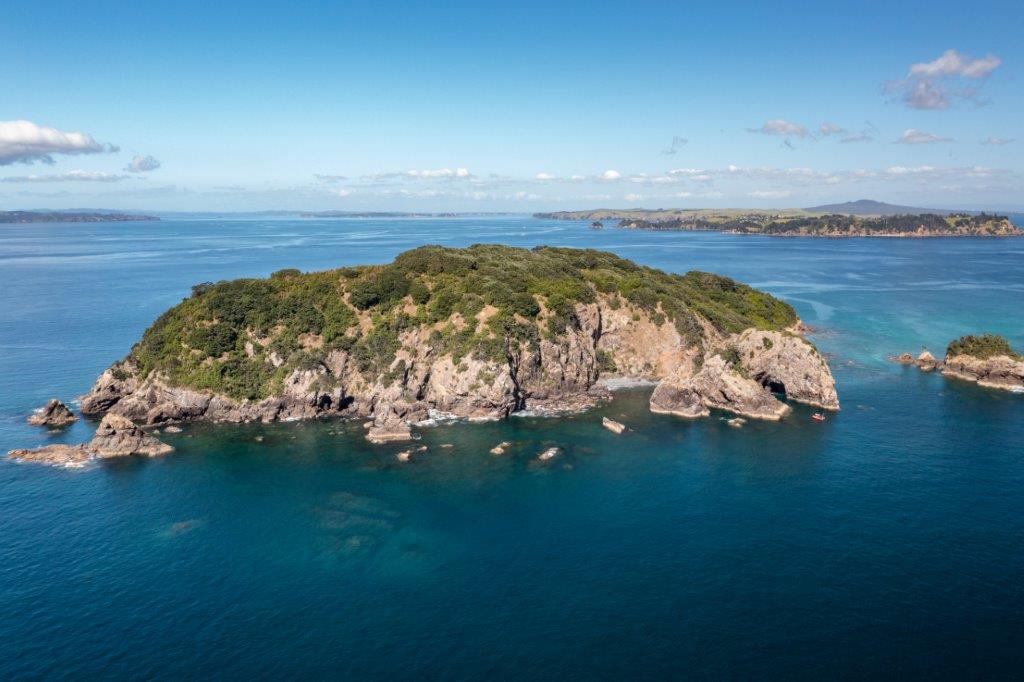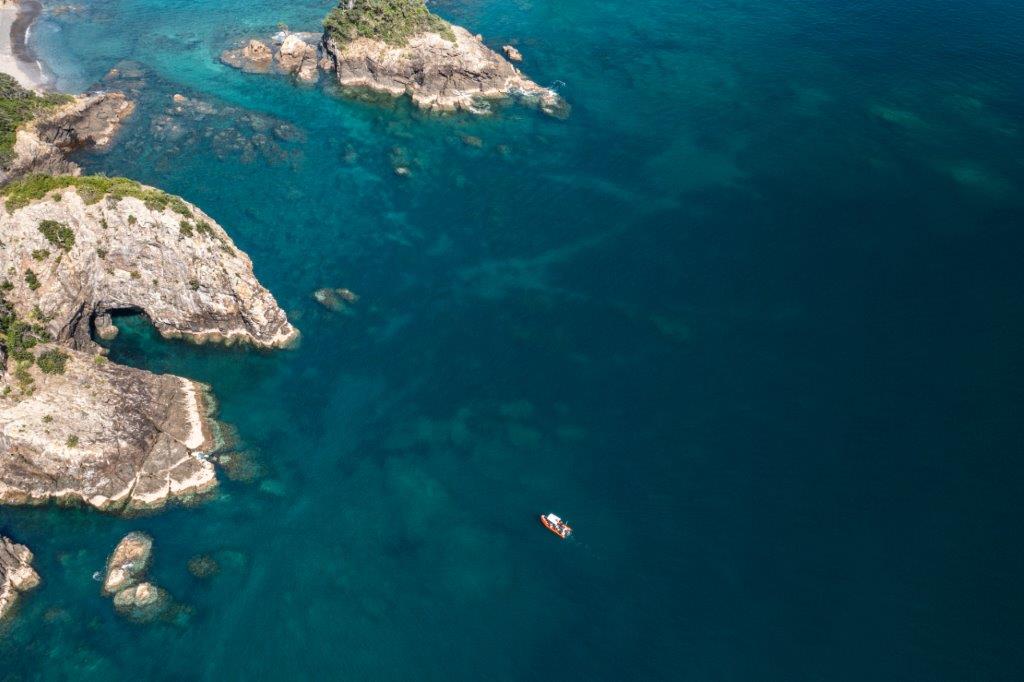The Noises hold a very special interest for seabird lovers. Being home to at least…
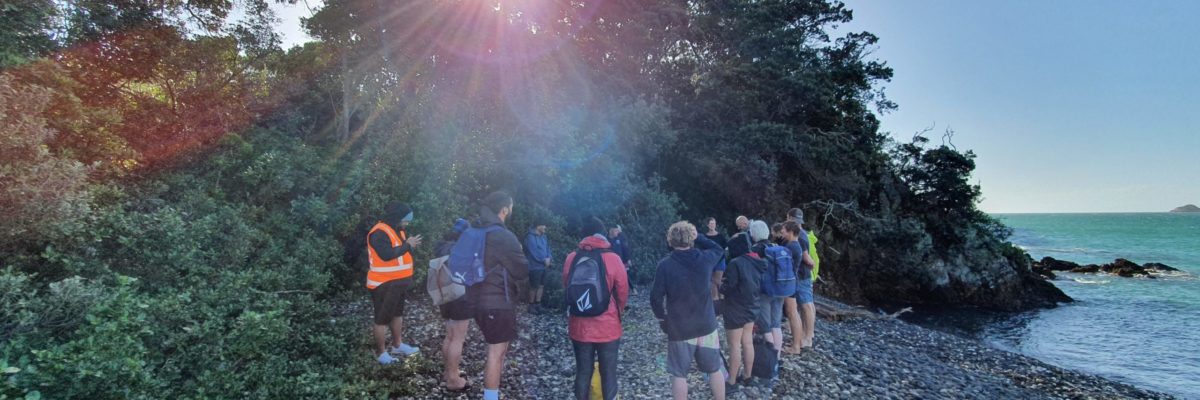
Ōtata midden weaves with oral histories during iwi visit
On a blustery autumn day, a boatful of brave visitors disembarked the Auckland Sea Shuttle water taxi on the eastern side of Ōtata and scrambled their way up the stony beach. Strong winds from the night before had whipped up the swell and the breeze blew dark clouds across the westerly face of the islands. But the rain held and the Neureuter family was on the beach – actually, Kyle was chest deep in the waves, steadying the boat – with a warm welcome and the offer of freshly brewed coffee.
The visitors were 10 members of Ngāti Pāoa and Ngaati Whanaunga who had accepted a long-standing invitation by the Neureuter family to visit this special place. Many in the group had come for the first time but for hundreds of years these iwi, along with others including Ngāi Tai ki Tāmaki, have fished around The Noises and used Ōtata as a waystation to camp and cook their kai. Oral histories tell us that Māori used the islands for catching hāpuka and sheltering as they journeyed around the Tīkapa Moana. The names of the islands vary amongst iwi but for some, they’re remembered for the connection to their tupuna.
- Te motu o horopapa (for Motuhoropapa)
- Te motu o tata (for Ōtata)
- Te motu hurā kina (for Rakino)
The oral history is backed by science. The midden on Ōtata’s western beach provides evidence of past occupation. To the untrained eye, the midden could pass as a crumbling bank. But the Neureuter family have known about the historic area for many years and were thrilled to have it studied by Louise Furey of Auckland Museum. As Louise talked to everyone on the blustery beach the layers came alive with stories of hāngi and feasts of kutai and seabirds and fish. A dark seam halfway down hints at volcanic ash and indeed carbon dating reveals the midden was once smothered in the ash of Rangitoto’s explosion. Lower still are fragments of more hangi and more occupation, meaning Māori inhabited the islands as early as the first decades of the 1300s.
As Louise explained her insights, connections to whakapapa and times past sparked a sense of loss – but also hope. The exploration of the midden and the determination by the family to revive iwi connection provides hope of a partnership approach to managing the moana in the near future. The kōrero around the midden mirrored the tone of the day. For every scientific fact, there were memories of childhood discoveries by the Neureuters and stories older still from Māori. It’s remarkable to think for example, that Ōtata’s 800-year-old pohutakawa tree would have been just a sapling when Māori first made their camp here.
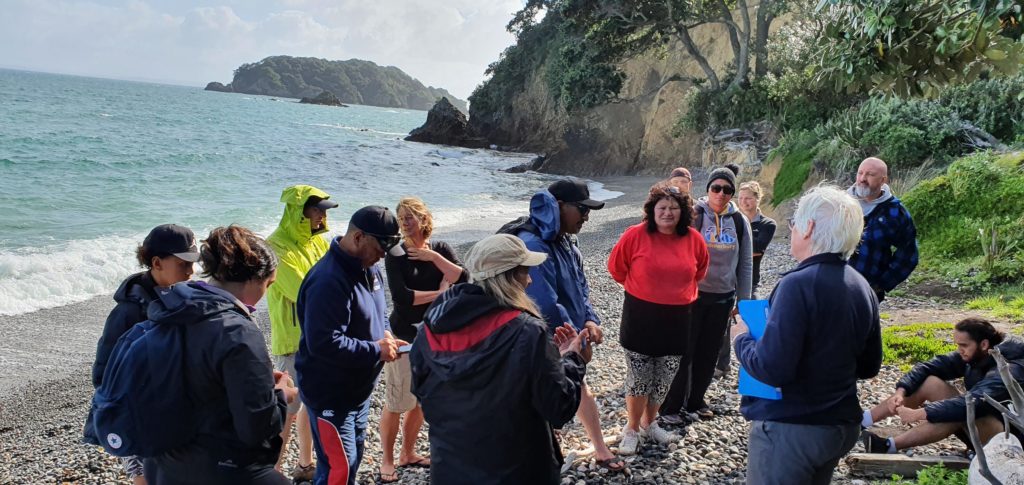
Standing at the water’s edge University of Auckland marine scientist Dr Tim Haggitt held a single, wild mussel and explained its significance in the ecosystem. The overharvesting of mussels by day-trippers is stripping the shallow reefs of their natural filters and breaking an essential link for those above and below in the food chain, he said. The science backs what the family has observed, and Māori have known for centuries. Over the years the Neureuters have watched in dismay as visitors have harvested kaimoana to unsustainable levels. Tipa Compain said the story is dismally familiar and shared a whakataukī. “Kia mau ki to tio me te pipi – if we lose the ability to go and get the oyster and the pipi (common kai moana) it means we [Waiheke] are lost – a tribal pepeha that forewarns that the simple act of gathering this form of kai disappears, then so do we as Māori.”
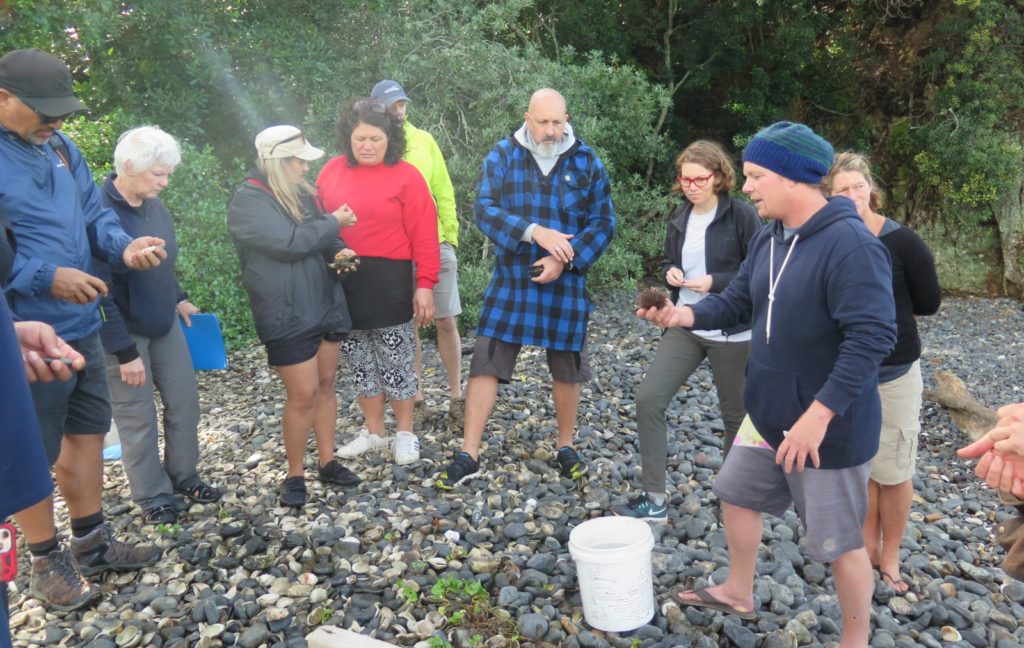
The experience of marine degradation is of course not isolated to The Noises. A number of the manuhiri are also members of the Waiheke Marine Project, a community-led conservation effort aimed at restoring the mauri of the coastal ecosystem. Led by Ngāti Pāoa, the project has pioneered a rāhui protection order on shell-fish around the island. The rāhui is still to be officially endorsed by the Ministry of Fisheries however it’s already being enthusiastically adopted by residents and iwi. The degradation is evident to all.
“Do we need a rāhui here at Ōtata?” someone asked. The answer is of course an overwhelming yes. Without protection, the marine habitat will continue to be decimated.
By working together, iwi and the Neureuters are discovering that their shared history is forging a passion for the future – a future where the mauri of the moana is restored and their children could together walk in the footsteps of their ancestors, past that mighty pohutukawa. They might even share kutai on the beach.


